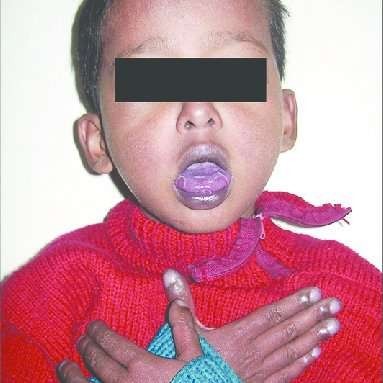A nurse is teaching a group of female adolescents about healthy eating. Which of the following instructions should the nurse include in the teaching?
"Limit your sodium intake to 3,000 milligrams per day."
"Consume 1,500 to 1,700 calories per day."
"Increase the amount of your dietary iron intake."
"Decrease your vitamin D intake once you start to menstruate.”
The Correct Answer is C
During menstruation, girls lose some iron and should try to replace it by including iron-rich foods in their diet.
Choice A is wrong because the American Heart Association recommends limiting sodium intake to 1,500 milligrams per day.
Choice B is wrong because caloric needs vary depending on age, sex, height, weight, and level of physical activity.
Choice D is wrong because vitamin D is important for bone health and adolescents should not decrease their intake.
Nursing Test Bank
Naxlex Comprehensive Predictor Exams
Related Questions
Correct Answer is C
Explanation
People with lactose intolerance can replace milk and dairy products with nondairy sources of calcium such as calcium-fortified products, fish with soft bones, broccoli and leafy green vegetables, oranges, almonds, Brazil nuts, and dried beans.
Choice A is wrong because “You can drink milk on an empty stomach” is not an answer because it may worsen symptoms of lactose intolerance.
Choice B is wrong because “You might tolerate plain milk better than chocolate milk” is not an answer because both plain and chocolate milk contain lactose.
Choice D is wrong because “You should consume flavored yogurt instead of plain yogurt” is not an answer because both flavored and plain yogurt contain lactose.
Correct Answer is B
Explanation

This is because oxygen saturation below 90% indicates that the infant is not getting enough oxygen and central cyanosis (bluish color of the skin due to lack of oxygen) is a sign of severe respiratory distress.
Both of these findings require immediate medical attention.
Choice A is wrong because cough or difficulty in breathing, while concerning, may not require immediate reporting to the provider as they are common symptoms of RSV infection.
Choice C is wrong because severe respiratory distress (e.g grunting, very severe chest indrawing), while concerning, may not require immediate reporting to the provider as they are common symptoms of RSV infection.
Choice D is wrong because signs of pneumonia with a general danger, while concerning, may not require immediate reporting to the provider as they are common symptoms of RSV infection.
Whether you are a student looking to ace your exams or a practicing nurse seeking to enhance your expertise , our nursing education contents will empower you with the confidence and competence to make a difference in the lives of patients and become a respected leader in the healthcare field.
Visit Naxlex, invest in your future and unlock endless possibilities with our unparalleled nursing education contents today
Report Wrong Answer on the Current Question
Do you disagree with the answer? If yes, what is your expected answer? Explain.
Kindly be descriptive with the issue you are facing.
